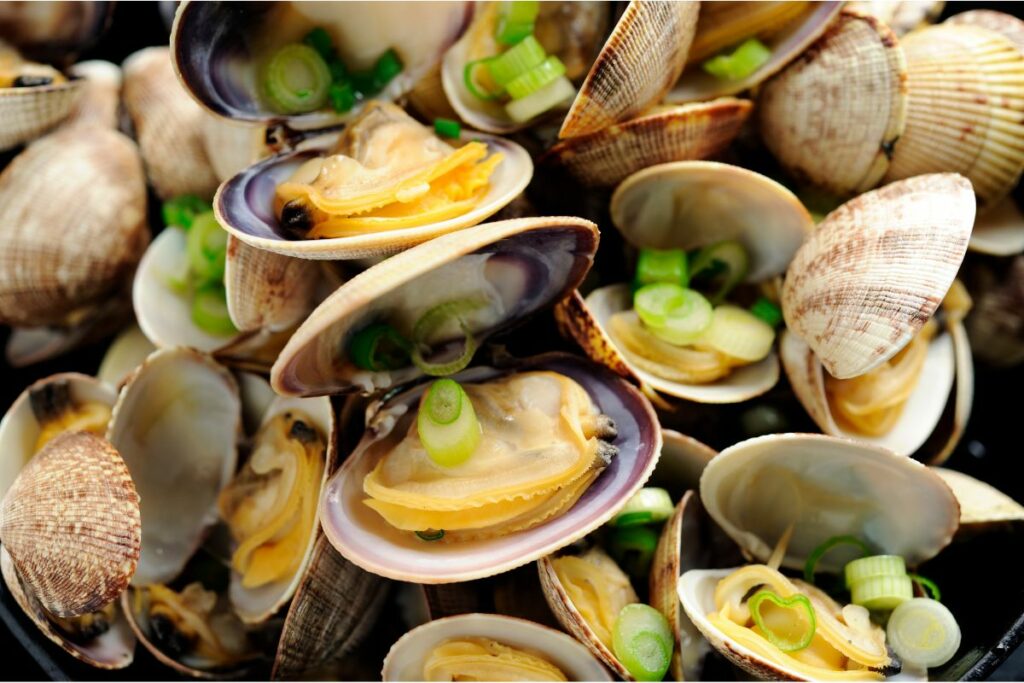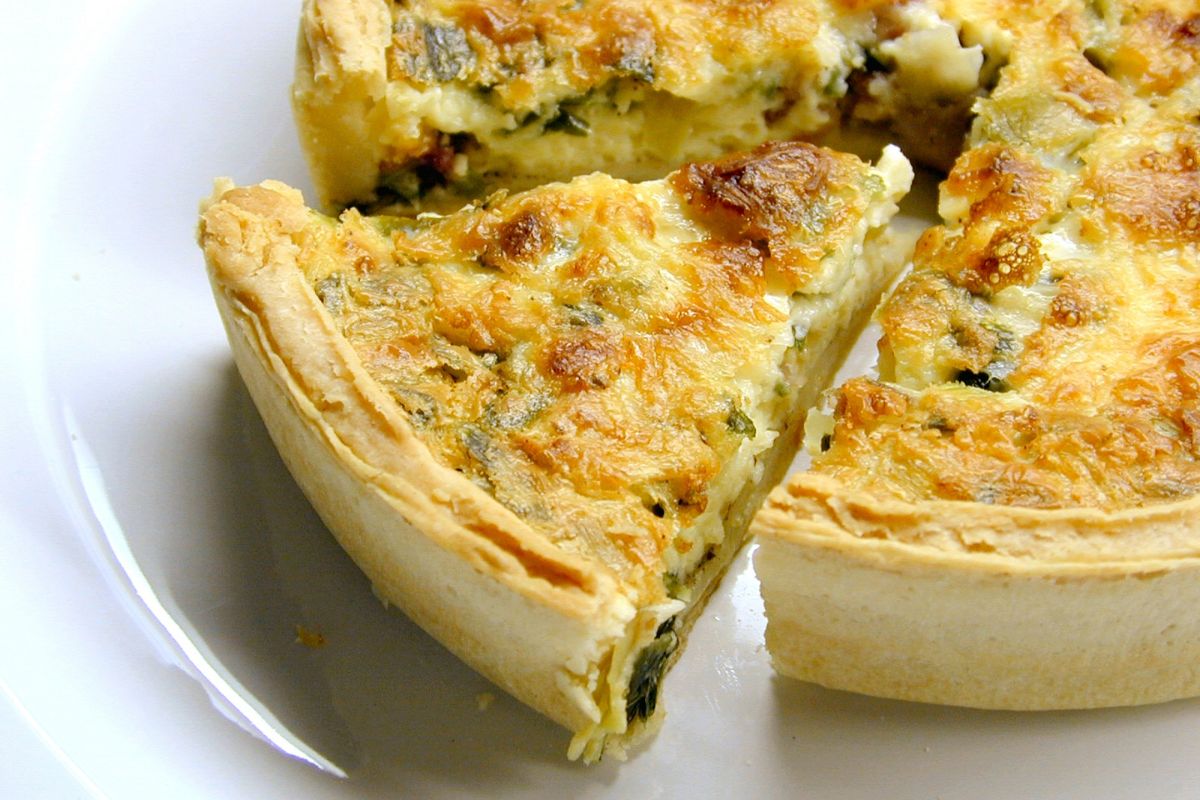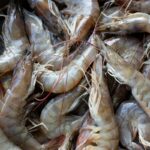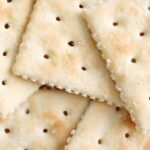If you’re a seafood enthusiast, you’ve likely tasted a variety of shellfish, including shrimp, crab, and lobster. But have you ever wondered what clams taste like?
Clams are a type of mollusk that are commonly found in oceans and freshwater bodies, and they are often used in various dishes, from clam chowder to linguine with white clam sauce.

While some people might find the idea of eating a creature that lives in sand unappealing, clams are actually quite delicious when prepared properly.
In this guide, we will delve into the world of clams and explore their flavor profile, texture, and culinary uses, so you can decide for yourself whether they are worth a try.
What Are Clams?
Clams are a type of shellfish that belong to the class Bivalvia, which also includes oysters, mussels, and scallops.
They have a hard, two-part shell that protects their soft, fleshy body. Clams can be found in both saltwater and freshwater environments, and they are widely distributed throughout the world.
There are many different species of clams, and they vary in size, shape, and color. Some of the most common types of clams used in cooking include littleneck clams, cherrystone clams, and quahogs.
Clams are a popular ingredient in many seafood dishes, and they are often served steamed, fried, or in stews and soups.
What Do Clams Taste Like?
The flavor profile of clams can vary depending on the species, where they were harvested, and how they were prepared.
However, in general, clams have a mild, briny, and slightly sweet taste, with a subtle mineral undertone. Some people also describe the flavor of clams as slightly nutty or earthy.
The texture of clams is firm and chewy, and they can be slightly gritty if not properly cleaned. When cooked, clams become tender and juicy, with a delicate flavor that complements a wide range of ingredients and seasonings.
Culinary Uses Of Clams
Clams are a versatile food that can be prepared in a variety of ways, making them a popular choice for seafood lovers. Here are some of the most common culinary uses of clams:
- Steamed clams: One of the most popular ways to enjoy clams is to steam them and serve them with melted butter, garlic, and lemon. This simple preparation allows the delicate flavor of the clams to shine.
- Clam chowder: Clams are a key ingredient in this classic soup, which also includes potatoes, onions, celery, and cream. The combination of flavors and textures creates a hearty and satisfying dish.
- Linguine with clam sauce: This pasta dish is made with clams, garlic, white wine, and parsley, and is a favorite in Italian cuisine.
- Fried clams: Clams can be breaded and deep-fried, creating a crispy and flavorful appetizer or main course.
- Clam bakes: Clams are a staple in traditional New England clam bakes, which also include lobster, corn on the cob, and potatoes. The clams are cooked in a pot over an open fire, infusing them with a smoky flavor.
The Best Way To Cook Clams

Clams can be cooked in a variety of ways, depending on your personal taste and the dish you’re making. Here are some popular methods for cooking clams:
- Steaming: Steaming is a classic and easy way to cook clams. Simply place the clams in a pot with a small amount of liquid, such as water, wine, or broth, and steam them until the shells open and the meat is cooked through. Add aromatics like garlic, herbs, and lemon for added flavor.
- Grilling: Grilled clams are a tasty and unique way to enjoy this seafood. Place the clams directly on a hot grill until the shells open and the meat is cooked through. Add butter or olive oil and fresh herbs to the clams after grilling for added flavor.
- Baking: Baking clams is a great way to infuse them with flavor. Top the clams with breadcrumbs, butter, and seasonings, and bake them in the oven until the tops are golden brown and the clams are cooked through.
- Frying: Fried clams are a popular dish in many coastal regions. Dip the clams in a batter made with flour, cornmeal, or breadcrumbs, and fry them until golden brown and crispy.
Health Benefits
Clams are not only delicious but they are also packed with a variety of health benefits. Here are some of the health benefits of clams:
- High in protein: Clams are an excellent source of protein, which is essential for building and repairing muscles, tissues, and organs in the body.
- Rich in vitamins and minerals: Clams are a good source of vitamins and minerals, including vitamin C, iron, potassium, and selenium.
- Low in fat: Clams are low in fat, making them a great protein source for people who are watching their fat intake.
- Low in calories: Clams are also low in calories, with about 20-25 calories per clam, making them a good choice for people who are trying to lose or maintain weight.
- May help with brain function: Clams contain omega-3 fatty acids, which are essential for brain function and may help reduce the risk of cognitive decline and dementia.
- May boost immunity: Clams contain zinc, which is important for immune system function and may help prevent infections and illnesses.
Safety Considerations
While clams are a nutritious and delicious food, it’s important to take some safety considerations into account when handling and preparing them to avoid the risk of foodborne illness. Here are some safety tips for handling and preparing clams:
- Buy from a reputable source: Make sure to purchase clams from a reputable seafood vendor to ensure that they are fresh and have been stored and handled properly.
- Check for freshness: Discard any clams that have cracked or open shells, or that have a strong or unpleasant odor.
- Rinse well: Rinse the clams under cold running water to remove any sand or debris that may be present.
- Cook thoroughly: Clams should always be cooked thoroughly until the shells open and the meat is opaque. Avoid eating clams that have not fully opened during cooking.
- Store properly: Store clams in the refrigerator at 40°F (4°C) or below until ready to use, and discard any that have been left at room temperature for more than two hours.
- Avoid cross-contamination: Be careful to avoid cross-contamination by washing hands and utensils thoroughly after handling raw clams, and keeping them separate from other foods during preparation.
By following these safety considerations, you can minimize the risk of foodborne illness associated with clams and enjoy them safely as part of a healthy and balanced diet.
Where Can You Buy Clams?
Clams can be found in most grocery stores and seafood markets, as well as online seafood retailers.
When purchasing clams, it’s important to choose ones that are fresh and alive. Look for clams that are tightly closed or that close when tapped, and avoid clams that have cracked or open shells, as this can be a sign that they are no longer alive.
If possible, it’s best to buy clams from a reputable seafood market or retailer that has a high turnover of fresh seafood, as this will ensure that you are getting the best quality clams.
You can also ask the vendor when the clams were harvested and how they were stored, to ensure that they are as fresh as possible.
How To Store Clams
If you’re not planning to cook your clams immediately after purchasing them, it’s important to store them properly to keep them fresh and alive. Here are some tips for storing clams:
- Keep them cold: Clams should be kept refrigerated until you are ready to cook them. Store them in a bowl or container covered with a damp cloth or paper towel to keep them moist.
- Don’t submerge them in water: While clams need to be kept moist, it’s important not to submerge them in water, as this can suffocate them and cause them to die. Instead, keep them in a damp environment, as described above.
- Check them regularly: Clams can die quickly if they are not stored properly, so it’s important to check them regularly for signs of spoilage. Discard any clams that have cracked or open shells, as well as any that have a strong or unpleasant odor.
- Use them within a few days: While fresh clams can last for up to a week when stored properly, it’s best to use them within a few days of purchase to ensure that they are as fresh as possible.
Final Thoughts
Clams are a versatile and flavorful seafood that can be enjoyed in a variety of dishes.
With a tender and slightly chewy texture, clams have a mildly sweet and briny flavor that is enhanced by cooking them with complementary ingredients such as garlic, butter, and herbs.
Whether steamed, fried, or baked, clams are a delicious and nutritious food that are rich in protein, vitamins, and minerals.
With proper handling and preparation, clams can be enjoyed safely and can add a unique and delicious element to your meals.
- How To Reheat A Cheesesteak - November 5, 2023
- What Are Three Must Have Kitchen Knives? - September 22, 2023
- How To Protect Edges Of Pie Crust - June 15, 2023








